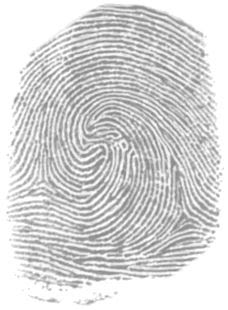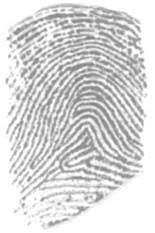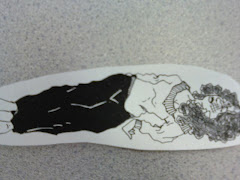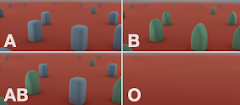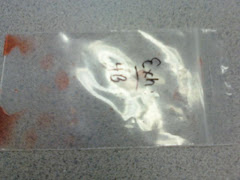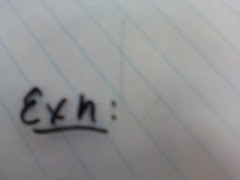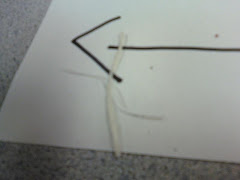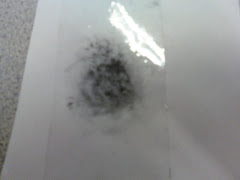In Nova Scotia a picture writing of a hand with ridge patterns was discovered.
In ancient Babylon, fingerprints were used on clay tablets for business transactions; not unlike in ancient China where thumb prints were found on clay seals.
But in 14th century Persia, one government official, a doctor, discovered no two fingerprints were exactly alike.
In 1686, Marcello Malpighi, a professor of anatomy at the university of Bologna, noted in his treatise the spirals, ridges and loops in fingerprints. Not thinking of this being an ability to identify someone. He also has a layer of skin named after him, the Malpighi layer.
In 1823, John Evangelist Purkinji, a professor of anatomy at the university of Breslau, published his thesis describing 9 fingerprinting patterns; but he too didn’t note the use for identification of different people.
In 1858, Sir William Hershel, Chief Magistrate of the Hooghly district in Jungipoor, India, began to use fingerprints on Native contracts. This is the first time the English used fingerprints. Even during this period, the idea of identification of individuals using fingerprints had not been thought of. He just wanted to scare businessmen from repudiating their signature. The natives however believed personal contact with the document made it more binding. Thus making it superstitious beliefs rather than scientific evidence.
Finally Herschel realized the impressions could indeed prove or disprove identity.
In the 1870’s, Dr. Henry Faulds, the British Surgeon-Superintendent of Tsukiji Hospital in Tokyo, Japan, took up the study of “skin furrows” after noticing finger marks on prehistoric pottery. Faulds, being a learned and industrious man not only recognized fingerprints as a means of identification but also made a means of classification for them as well. In 1880, Faulds sent this information to Sir Charles Darwin who sent it to his cousin Francis Galton claiming himself to be incapable of helping him.Also in 1880, he published ”Nautre”, an article in the Scientific Journal. In this he discussed fingerprint being a means of identification, and the use of printer ink as a method for obtaining these fingerprints. He also is credited with the first fingerprint identification of a greasy fingerprint left on an alcohol bottle.
In 1882, Gilbert Thomson of the U.S. Geological Survey in New Mexico used his own fingerprints on a document to prevent forgery. The was the first known use of fingerprints in the United States.
Life on the Mississippi by Mark Twain, a murderer was identified by his fingerprint; also like in another one of his books Pudd’n Head Wilson where the culprit was convicted using fingerprint evidence.
In the 1880’s, Sir Francis Galton, a British anthropologist and also a cousin of Charles Darwin, began his observations of fingerprints as means of identification. In 1892, his book Fingerprints was published, establishing the individuality of fingerprints along with the classification of fingerprints. He also discovered that fingerprints don’t show any individual’s intelligence of genetic history; furthermore, he confirmed that fingerprints don’t change over the course of time,and no two fingerprints are exactly the same. He concluded the chances of the same fingerprint would be 1 in 64 billion. Galton discovered the characteristics in which the fingerprints can be identified. We still use these methods today; they are known as the Galton’s Details.
In 1891, Juan Vucetich, an Argentine Police Official, began the first fingerprint files based on Galton pattern types. At first, Vuceich included the Bertillon System with the files. In 1892, he identified a woman, Rojas, a murderer who killed herself in an attempt to frame another. She was identified by her fingerprint on a door post.
1901
Introduction of fingerprints for criminal identification started in England and Wales by using Galton's observations (after being revised by Sir Edward Richard Henry). Thus began the Henry Classification System. This is even used today in all English speaking countries.
1902
Was the first systematic use of fingerprints in the U.S. by the New York Civil Service Commission for testing. Dr. Henry P. DeForrest pioneers U.S. fingerprinting.
1903
The New York State Prison system began the first systematic use of fingerprints in U.S. for criminals.
1904
The use of fingerprints began in Leavenworth Federal Penitentiary in Kansas, and the St. Louis Police Department. They were assisted by a Sergeant from Scotland Yard, who had been on duty at the St. Louis Exposition guarding the British Display.
1905
1905 saw the use of fingerprints for the U.S. Army. Two years later the U.S. Navy started; and was joined the next year by the Marine Corp. During the next 25 years, more and more law enforcement agencies join in the use of fingerprints as a means of personal identification. Many of these agencies began sending copies of their fingerprint cards to the National Bureau of Criminal Identification, which was established by the International Association of Police Chiefs.
1918
It was in 1918 when Edmond Locard wrote that if 12 points (Galton's Details) were the same between two fingerprints, it would suffice as a positive identification. This is where the often quoted (12 points) originated. Be aware though, there is "NO" required number of points necessary for an identification. Some countries have set their own standards which do include a minimum number of points, but not in the United States.
1924
In 1924, an act of congress established the Identification Division of the F.B.I.. The National Bureau and Leavenworth consolidated to form the nucleus of the F.B.I. fingerprint files.
1946
By 1946, the
 had processed 100 million fingerprint cards in manually maintained files; and by 1971, 200 million cards.
had processed 100 million fingerprint cards in manually maintained files; and by 1971, 200 million cards.
With the introduction of AFIS technology, the files were split into computerized criminal files and manually maintained civil files. Many of the manual files were duplicates though, the records actually represented somewhere in the neighborhood of 25 to 30 million criminals; and an unknown number of individuals in the civil files.
1999
By 1999, the FBI had planned to stop using paper fingerprint cards (at least for the newly arriving civil fingerprints) inside their new Integrated AFIS (IAFIS) site at Clarksburg, WV. IAFIS will initially have individual computerized fingerprint records for approximately 33 million criminals. Old paper fingerprint cards for the civil files are still manually maintained in a warehouse facility (rented shopping center space) in Fairmont, WV. Since the Gulf War, most military fingerprint enlistment cards received have been filed only alphabetically by name. The FBI hopes to someday classify and file these cards so they can be of value for unknown casualty (or amnesiac) identification (when no passenger/victim list from a flight, etc., is known).

2005
Currently now in 2005, paper fingerprint cards are still in use and being processed for all identification purposes.
Why Fingerprint Identification?
Fingerprints offer an infallible means of personal identification. That is the essential explanation for their having supplanted other methods of establishing the identities of criminals reluctant to admit previous arrests. Other personal characteristics change - fingerprints do not.
In earlier civilizations, branding and even maiming were used to mark the criminal for what he was. The thief was deprived of the hand which committed the thievery. The Romans employed the tattoo needle to identify and prevent desertion of mercenary soldiers.
More recently, law enforcement officers with extraordinary visual memories, so-called "camera eyes," identified old offenders by sight. Photography lessened the burden on memory but was not the answer to the criminal identification problem. Personal appearances change.
Around 1870 a French anthropologist devised a system to measure and record the dimensions of certain bony parts of the body. These measurements were reduced to a formula which, theoretically, would apply only to one person and would not change during his/her adult life.
This Bertillon System, named after its inventor, Alphonse Bertillon, was generally accepted for thirty years. But it never recovered from the events of 1903, when a man named Will West was sentenced to the U.S. Penitentiary at Leavenworth, Kansas. You see, there was already a prisoner at the penitentiary at the time, whose Bertillon measurements were nearly exact, and his name was William West.
Upon an investigation, there were indeed two men. They looked exactly alike, but were allegedly not related. Their names were Will and William West respectively. Their Bertillon measurements were close enough to identify them as the same person. However, a fingerprint comparison quickly and correctly identified them as two different people. The West men were apparently identical twin brothers per indications in later discovered prison records citing correspondence from the same immediate family relatives.
This information was derived from http://www.aladdinusa.com/documentationservices/fingerhistory.htm




